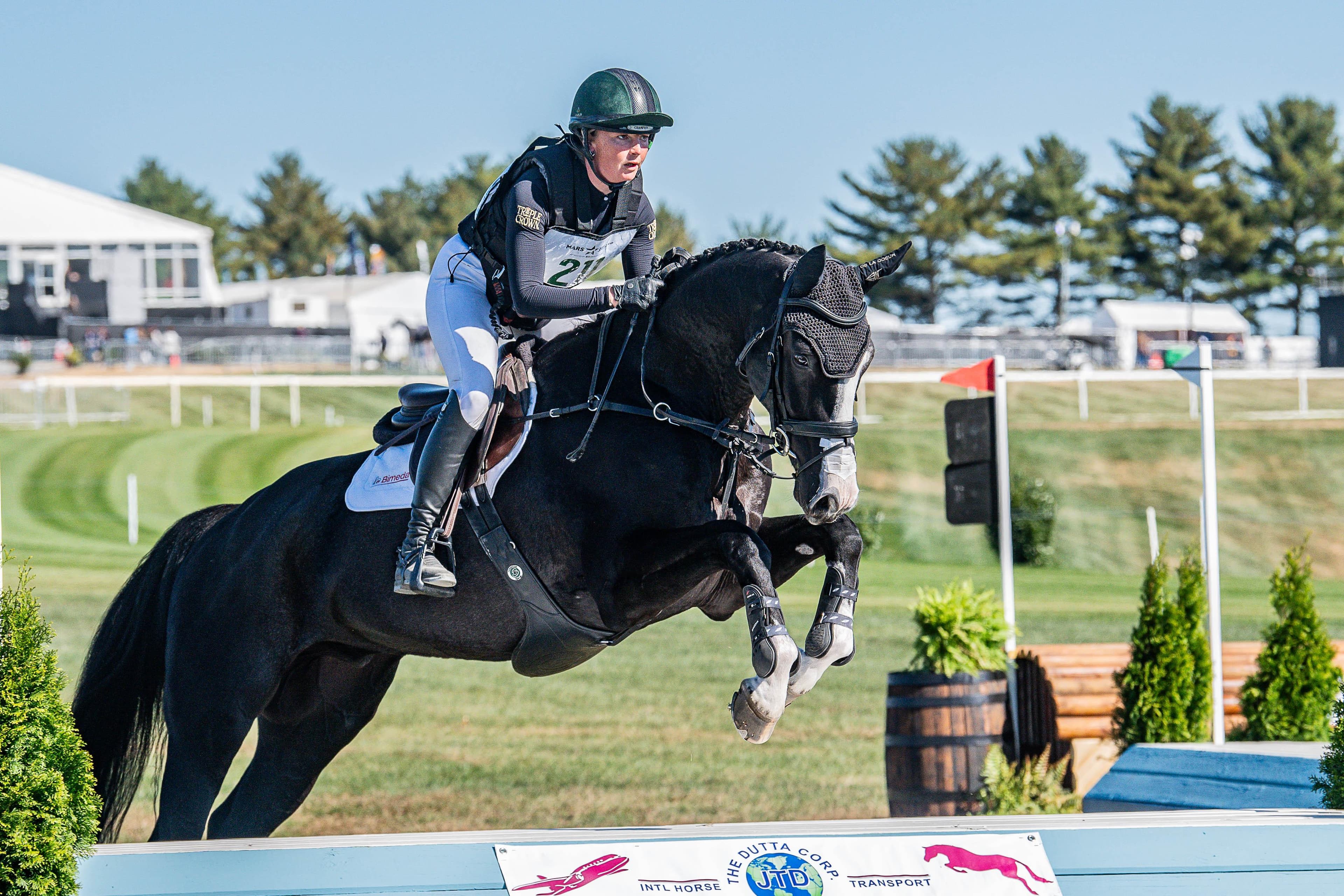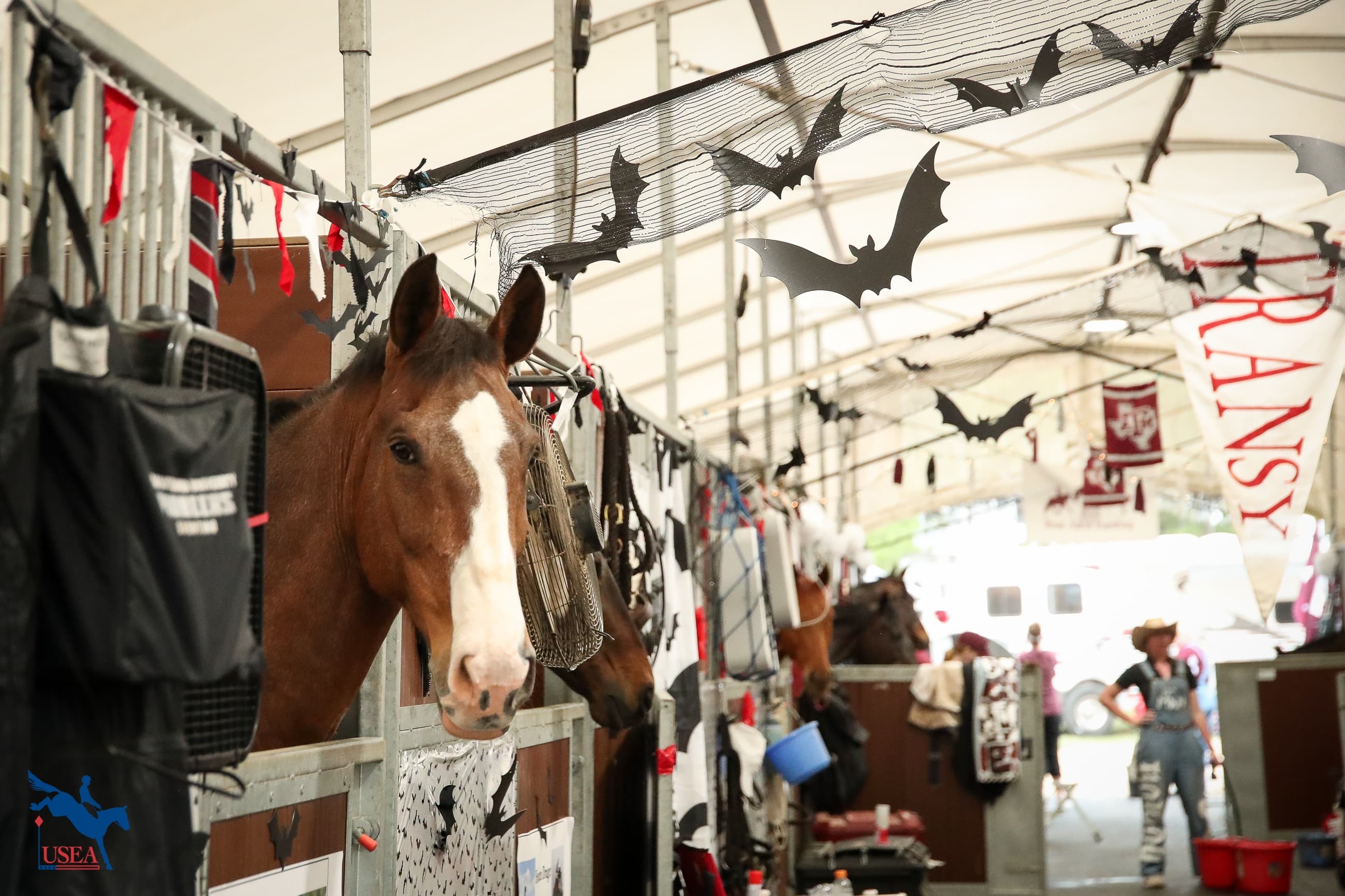Horse Insurance 101

I had the unenviable Thursday 11:30 a.m. time slot for my Insurance 101 seminar at the 2008 USEA Convention, and expected a small group (if anyone), figuring that a lot of attendees wouldn’t even be on site yet — and let’s face it, insurance seminars don’t usually result in people beating down the doors to get in.
While it wasn’t standing room only, we had an impressive group not only in size, but also in knowledge and enthusiasm. Following is a summary of some of the items we talked about….
For many horse owners, including a line item for horse insurance on their budget often isn’t a top priority. But we insure so many of our major investments — cars, trucks, houses, boats, our health, and even our lives — we might want to consider doing the same for our horses.
(Left: Josh Walker photo)
It’s understandable why many horse owners decide not to insure – after accounting for board, vet, and farrier bills, not to mention competition and training fees, there might not be much left in the bank account, especially in this difficult economy. But unless they also enough cash stashed away to replace their horse, or to cover the costs for a major health problem (the typical, no-complications colic surgery runs between $6,000 – $8,000) then it’s a good idea to at least consider the benefits of insuring. Whether they’re Olympic contenders or Novice level packers, these horses for most of us are both financial investments and members of the family, and an insurance policy is one of the best ways to protect both.
Common Coverages for Horse Owners
The Full Mortality policy is where most horse owners start. This is life insurance for the horse, and has a one-year term from its inception date and generally covers while the horse is in the continental U.S. or Canada for death due to accident, injury, sickness, or disease, as well as loss or death due to theft. In addition, most Full Mortality policies also include some Emergency Colic Surgery coverage at no charge, up to a limit of $2,500 – $3,000 (depending on the company and the insured value of the horse), for horses without histories of colic issues.
Full Mortality annual premiums are based on a percentage of the horse’s value, which is derived from its age, breed, and use. Rates for event horses ages 2-15 range from 3.6% to 4.5% (depending on the company) so the annual premium for a Full Mortality policy on an event horse insured at $10,000 could start as low as $360.
Major Medical/Surgical coverage is an endorsement that can be added to the Full Mortality policy. This is coverage that comes into play if the horse suffers an injury, illness, accident or disease that requires care from the vet, and is available for horses from the age of 31 days through 15 years. Annual policy limits range from $5,000 to $12,500 with annual premiums starting at $190. Deductibles or co-pays generally apply, depending on the company, with the average deductible ranging from $250 to $325 per claim.
Major Medical/Surgical does not cover for pre-existing conditions, for routine health maintenance such as inoculations, deworming, farrier work, or dental care, or for elective or cosmetic surgery such as castration, Caslick’s procedures, or surgery to treat roaring. Exclusions vary by company, but other common things that are not covered include transportation charges, the veterinarian’s call charge, integrative therapy (e.g. acupuncture, massage, or chiropractic), and joint injections.
Where this coverage can become invaluable is in diagnosing and treating a major health problem, reimbursing you for covered charges after meeting any deductibles or co-pays if your horse colics, founders, runs through a fence, gets kicked, develops EPM, or suffers any of the other countless injuries or illnesses that can keep you up at night. Remember that actual coverage varies depending on the company you insure with, so ask your agent about limitations, exclusions, co-pays, and deductibles.
The Major Medical/Surgical endorsement is a very popular coverage – it’s estimated that 90-95 percent of policyholders purchase it. With new medical and surgical techniques and procedures developing every day, and the costs to perform them increasing as well, for many horse owners the coverage more than pays for itself.
To put unexpected veterinary costs into perspective, here are some amounts paid on recent claims: For just a medical colic treated at the clinic for a day or two, claim checks of more than $2,000 are common. A seemingly minor hock wound from an altercation with a pasture mate can result in a puncture wound that involves the joint and over $5,000 in covered medical bills. How about a tooth abscess that cost the horse owner over $2,500. And then of course there are the performance-related lamenesses that can involve extensive diagnostics and various treatment methods to get the horse back on track, resulting in several thousands of dollars in covered expenses.
And while your Major Medical/Surgical coverage will not cover every last expense, and you will likely have to pay the vet and then be reimbursed by the company later, as the examples above show, it can certainly soften the blow. In addition, it will help you to make medical decisions for your horse based on what’s best for him instead of just what your bank balance will allow.
Surgical Only coverage, which helps reimburse for only the costs of life saving surgery, is also available and is often chosen by owners of horses 16 or older, since the Major Medical/Surgical endorsement is not available for older horses. It does not cover any medical conditions or diagnostics, so if the horse has a medical colic, develops EPM, a non-surgical lameness, etc., this coverage would not respond, but for owners of older horses primarily concerned with colic surgery, it can come in handy.
Loss of Use is an endorsement that covers in the event the horse can permanently no longer perform its insured use, but does not need to be humanely destroyed. Limited coverage is available for event horses, and the maximum amount paid in the event of a claim ranges from 50 – 60 percent of the horse’s insured value, with premiums generally starting at 60% of the mortality premium.
This is a relatively complicated coverage and is best discussed in detail with an insurance agent. Keep in mind that some companies have provisions in their policies that allow them to take possession of the horse after a claim is paid, which can be a concern for some horse owners. In addition, Loss of Use claims are often not easy to resolve. Determining whether or not a horse is truly permanently disabled is not always simple due to the nature of the injury, the expected recovery time, or treatment options. These claims are rarely straightforward and can sometimes be frustrating for the horse owner.
Caveat Emptor
A few “let the buyer beware” items for consideration. Horse insurance is very different from human health insurance. For example, pre-existing conditions are not covered, even if the horse was insured when it was first injured or became ill. So, if your horse bows a tendon, develops EPM, requires colic surgery, etc. while insured, expect to see an exclusion on the following year’s policy when you renew. This is because horse insurance policies are one-year term policies that are underwritten every year, so a health problem that occurred the previous year will be considered pre-existing to the new policy.
Quotes and Paperwork
Insuring a horse has become a relatively painless, straightforward process. Many agencies offer quotes on-line, so with just a few keystrokes and a click of your mouse, you can get an emailed quote. Of course you can also call the agent, which is highly recommended, since you want to find someone that is knowledgeable, efficient, and professional–and preferably someone who knows the sport.
After you’ve got a quote, the paperwork to insure the average horse is simple to complete. In fact, for horses insured at $50,000 or less, and under the age of 16, generally a veterinary certificate is not needed, so all that you would need to do is fill out the standard application and statement of health. Immediate coverage is often available by faxing the required documentation to your agent, which is especially helpful for someone in the process of purchasing a new horse that they want covered before it is transported to their barn.
Private Horse Owner’s Liability
Eventers are a relatively optimistic bunch, so it’s probably not often that we consider the fact that if we own a horse, we will likely be considered at least partially responsible in the event it injures a third party or damages their property, even if it is boarded or not in our care at the time of the incident.
Of course the more you do with your horse, the higher your risk of an accident, especially if you travel to shows or clinics. How often do we hear the words “Loose horse!” at a horse show (especially on cross-country day)? What happens if that galloping horse bolts into a crowd of spectators, or worse makes its way to a road and hits a car, injuring the passengers and totaling the vehicle?
In today’s litigious environment, those scenarios and countless others could see you named in a lawsuit. If you keep your horses on your own property, your homeowners’ or farmowners’ policy (or some type of personal umbrella policy if you have one) may offer some protection – though they often exclude equine related activities. You should confirm with your agent what is or is not covered, keeping in mind to discuss what coverage you would have if the horse goes off your premises, such as to a competition or clinic. Also, whatever the answer you receive from your agent, make sure to get it in writing.
For scenarios where you don’t have any coverage through existing policies, you should consider a Private Horse Owners’ Liability policy (PHO), which in general is designed to cover private horse owners in the event they are sued by a third party for bodily injury or property damage caused by a horse they own that is scheduled on the policy. This policy is not for those involved in commercial equestrian activities of any type including training, racing, breeding, boarding, or riding instruction. Those individuals should see about getting coverage for their activities under a Commercial General Liability and/or Care, Custody and Control policy (look for a future installment to discuss these coverages).
Various PHO liability limits are available, including $300,000 per occurrence/$600,000 general aggregate; $500,000 per occurrence/$1 million general aggregate; and $1 million per occurrence/$2 million general aggregate, with annual premiums starting out as low as $130 and often able to cover individuals who own multiple horses scheduled on the policy (up to four or five) at no additional charge.
Getting coverage in place is pretty simple – generally submission of a short application and payment takes care of it.
Conclusion
Painful as it may be to relinquish hard-earned dollars, especially to protect against “what if” scenarios that (hopefully) may never occur, knowing that you’re covered in case of the unthinkable buys you more than security, it also gives you peace of mind.
For more information on policies offered through Broadstone Equine Insurance Agency, the USEA’s Official Equine Insurance Provider, call 888-687-8555 or visit www.BroadstoneEquine.com.
NOTE: The information contained in this article is general in nature and is not a guarantee of coverage of any type. You must contact an agent for specific coverage information and advice.














